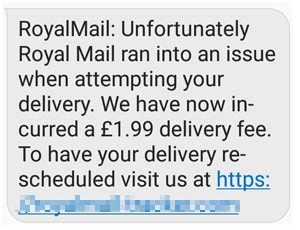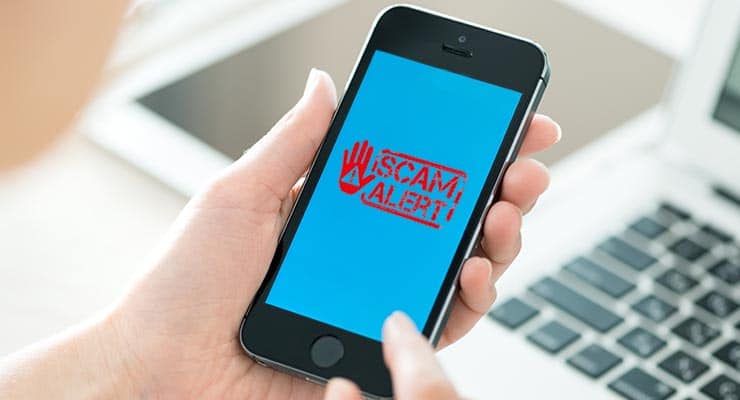Watch out for fake “missed delivery” text SMS messages
An extensive network of scam text messages is tricking recipients into visiting spoof websites by claiming the recipient has missed a delivery from a courier.
These fake missed delivery notice text message scams have been particularly popular in the UK during the pandemic when many people have been ordering products online, but have also popped in the United States and Australia.
The missed delivery text messages claim that the recipient has missed a delivery and they need to click a link to reschedule it. In some (but not all) cases the recipient is told there is a delivery fee to be paid.
In the UK, scammers often claim to be from the Royal Mail (discussed here). However other well-known couriers including DHL (discussed here) and Hermes (discussed here) have also been used to scam recipients.
Some examples of these scams are below.


If a recipient clicks the link, they’re taken to a spoof website operated by cyber crooks.
The website asks for personal information, such as name, phone number, address, date of birth. Such sites can also request payment information for a delivery fee.
Sponsored Content. Continued below...
All of that information is then transmitted to the crooks. These are called phishing scams or smishing scams went sent via SMS.
The victim’s information can then be used to commit identity fraud, access the victim’s bank accounts or used to target the victim with further – more targeted – scams.
In one reported case such targeted scams can include a crook calling the recipient while claiming to be from their bank. The crook can use information they gleaned from the victim when the victim entered their personal and bank information into the spoof website, to make the scam more convincing.
In some cases recipients have been instructed to download “tracking” software which turned out to be malware.
Avoiding these scams is easy is you follow some simple advice. If you get a text message about a missed or failed delivery, never –
1. Click a link in the message.
2. Never download software that the message directs to.
3. Never reply to the message with any personal information.
4. Never phone a number contained within the message.
Sponsored Content. Continued below...
If you’re not sure if the message is genuine, go directly to the website of the postal service or courier quoted in the message and contact them directly using the contact information listed on their website.
This way you’ll know you’re talking to a real company and not to impostors.
If you do click a message in a link and are asked for personal information, always check the web address. Always make sure you’re on the official website of the relevant company. If you’re on a spoof website or you’re not sure if it’s the official website, click away.
And finally, to help you spot phishing websites, we always recommend having good security software installed that includes an anti-phishing feature. Our recommendation is here.
Keep up-to-date with all the latest cybersecurity threats and our tips to stay safe online. Follow us on Facebook, Instagram and Twitter.
Continued below...
Thanks for reading! But before you go… as part of our latest series of articles on how to earn a little extra cash using the Internet (without getting scammed) we have been looking into how you can earn gift vouchers (like Amazon vouchers) using reward-per-action websites such as SwagBucks. If you are interested we even have our own sign-up code to get you started. Want to learn more? We discuss it here. (Or you can just sign-up here and use code Nonsense70SB when registering.)
Become a Facebook Supporter. For 0.99p (~$1.30) a month you can become a Facebook fan, meaning you get an optional Supporter Badge when you comment on our Facebook posts, as well as discounts on our merchandise. You can subscribe here (cancel anytime.)

